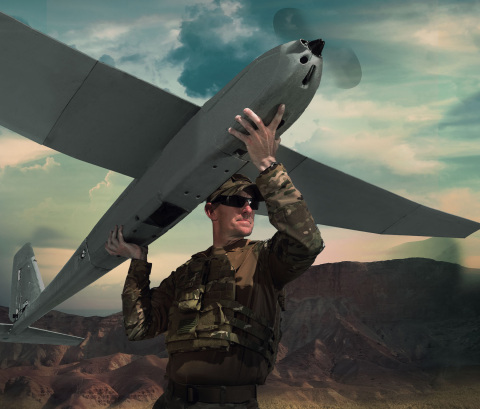AeroVironment Launches New Puma™ LE, Delivering Group 2 Capabilities in a Group 1 Footprint with Increased Range, Endurance and Payload Capacity
- Rapidly deployable via hand-launch, Puma LE’s 5.5-hour endurance delivers persistent data with increased time on station, in an economical two-case mission packout
- Puma LE’s 5.5-pound total payload capacity includes a secondary payload bay with dedicated power supply and Ethernet connection, making Puma LE the ideal multi-mission platform for third-party payload integration
- Shared plug-and-play interoperability with Puma AE components reduces logistical and training impact
This press release features multimedia. View the full release here: https://www.businesswire.com/news/home/20191014005228/en/

AeroVironment’s new Puma LE small unmanned aircraft system (Photo:
Delivering Group 2 capabilities in a Group 1 footprint, the aircraft weighs only 22.5 pounds (10.4 kilograms), and is launchable by hand or bungee, making Puma LE easy to deploy and recover. On-board batteries provide 5.5 hours of flight endurance, doubling the time on station of Puma 3 AE, with an operational range of 60 kilometers when used with AeroVironment’s Long-Range Tracking Antenna (LRTA). Puma LE’s economical dual-case mission pack contains everything needed to perform two complete 5.5-hour missions with a single aircraft and Ground Control System (GCS).
Puma LE is purpose-built for multi-mission operations with up to 5.5 pounds of total payload capacity. The aircraft’s ruggedized secondary payload bay enables the integration of third-party payloads with a dedicated power supply providing 18-24 volts at up to 5 amps, and an Ethernet connection port for payload communications. This capability provides the flexibility for operators to incorporate specialized payloads such as electronic warfare, RF emitter geolocation, laser designation, communications relay and others.
“Puma LE is the next generation of the combat-proven Puma AE small UAS, delivering immediate tactical ISR, extended endurance and a dedicated secondary payload bay to dramatically expand its mission capabilities,” said
Puma LE can be operated manually or autonomously with AeroVironment’s common GCS. Puma LE utilizes plug and play, interoperable line-replaceable unit (LRU) components that can be shared with other Puma AE aircraft. This native compatibility reduces training and logistical impact for operators. In addition, current Puma AE customers can now optimize their fielded systems by purchasing Puma LE as an add-on aircraft and easily installing Puma AE LRU components. Multiple Puma LE system options provide the flexibility for customers to choose the right configuration based on mission requirements.
About AeroVironment Tactical UAS
The RQ-20A/B Puma™, Puma LE, RQ-11B Raven®, RQ-12A Wasp®, together with VAPOR Helicopter UAS comprise AeroVironment’s family of small Unmanned Aircraft Systems. This Family of Systems provides increased capability to the warfighter that gives ground commanders the option of selecting the appropriate aircraft based on the type of mission to be performed. This increased capability has the potential to provide significant force protection and force multiplication benefits to small tactical units and security personnel.
About
Safe Harbor Statement
Certain statements in this press release may constitute "forward-looking statements" as that term is defined in the Private Securities Litigation Reform Act of 1995. These statements are made on the basis of current expectations, forecasts and assumptions that involve risks and uncertainties, including, but not limited to, economic, competitive, governmental and technological factors outside of our control, that may cause our business, strategy or actual results to differ materially from those expressed or implied. Factors that could cause actual results to differ materially from the forward-looking statements include, but are not limited to, our ability to perform under existing contracts and obtain additional contracts; changes in the regulatory environment; the activities of competitors; failure of the markets in which we operate to grow; failure to expand into new markets; failure to develop new products or integrate new technology with current products; and general economic and business conditions in
For additional media and information, please follow us at:
Twitter: https://twitter.com/aerovironment
LinkedIn: https://www.linkedin.com/company/aerovironment
Instagram: https://www.instagram.com/aerovironmentinc/
View source version on businesswire.com: https://www.businesswire.com/news/home/20191014005228/en/
Source:
AeroVironment, Inc.
Steven Gitlin
+1 (805) 520-8350
pr@avinc.com
Mark Boyer
For AeroVironment, Inc.
+1 (310) 229-5956
mark@boyersyndicate.com
